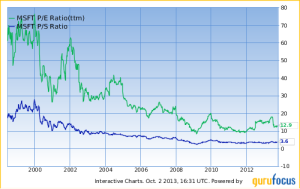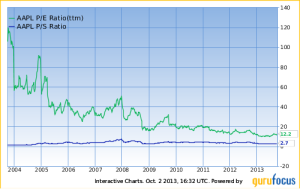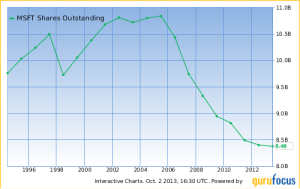Source: JT Long of The Gold Report (10/4/13)
http://www.theaureport.com/pub/na/quality-over-quantity-stressed-at-colorado-conferences
If it is fall, it must be conference season in Colorado. The Denver Gold Forum, held Sept 22–25, was an invitation-only event billed as featuring seven-eighths of the world’s publicly traded gold and silver companies measured by production. It was preceded by the Precious Metals Summit in Beaver Creek, which focused on smaller, emerging companies, some 90 of them with market caps of at least $20 million. Attendees included analysts, fund managers and institutional investors eager to hear updates on companies they own—or may want to own in the future. The Gold Report Publisher Karen Roche and Associate Publisher Jason Mallin were there and brought back these reports.
At the Denver Gold Forum, Adrian Day, president of Adrian Day Asset Management, noted, “Among the larger miners, there was the constant drumbeat that profitable operations would come ahead of growth for the sake of growth. To hear ‘Our new focus is on mines that make money’ makes one wonder what the old focus was: ‘Mines that lost money,’ perhaps? We all know that when gold gets back to $1,800 an ounce ($1,800/oz) or $1,900/oz, the miners—admittedly at the behest of large shareholders—will be out there once again looking for acquisitions. Why are they not looking for acquisitions now, when the market is depressed? Isn’t this the time to be buying? A few are, but very few.”
He used the opportunity of having company management in one place to visit with those in his portfolio, and with some companies that were not. “Generally, companies we own justified the support, while those we do not own did nothing to change that view. One exception: I never thought I’d say this, but Barrick Gold Corp. (ABX:TSX; ABX:NYSE) is looking intriguingly undervalued here. (That is not a recommendation, but we’re looking.)”
Beacon Rock Research founder Michael Niehuser used the conference to learn more about the companies attending. “A focus among presenters at the 2013 Denver Gold Forum was on reducing costs in an effort to demonstrate viability. This was reminiscent of the late 1990s. If this is the case, there should be a good opportunity to locate companies with good prospects.” He sat down with Excellon Resources Inc. (EXN:TSX; EXLLF:OTCPK) and was impressed with what he heard. “The company appears to have the potential to emerge as a solid junior silver producer in the class of an Endeavor Silver Corp. (EXK:NYSE) or Great Panther Silver Ltd. (GPR:TSX; GPL:NYSE.MKT). Excellon is one of the highest grade silver producers in the world, with a goal of increasing annual production to about 1.4–1.5 million ounces (1.4–1.5 Moz) of silver a year or approximately 2.2 million silver equivalent ounces.
“Excellon appears to have moved beyond some of the challenges of 2012 and represents one of the best investment ideas undiscovered by analysts. This low-tonnage underground operation has produced grades of about 800 grams per ton silver and is producing about $1 million of cash flow on a monthly basis over the last quarter. The project has a resource of about 17 Moz of silver, representing 7 to 10 years of production, with exceptional potential to both expand the identified resource and potentially locate additional higher grade feeder zones. With the recent roll back and apparently satisfied shareholder base, Excellon appears to have the bases of production, exploration and potential acquisition covered.”
Brent Cook, exploration analyst, geologist and publisher of Exploration Insights, was blunt: “The overriding theme of the Denver event could be politely summarized as an industry in transition, less politely, in decline. The major miners are rationalizing operations, reshaping and recalibrating their companies, ‘getting smarter,’ and focusing on all-in sustaining costs and cash flow while cutting dividends. This means shutting down or selling marginal operations, cutting production, high grading, slowing development and in many cases eliminating exploration. We know where this will lead—the eventual acquisition of profitable deposits, as well as a few desperation mergers. Although the focus on earnings is a positive development, it was tough to come away with a real reason to pony up some cash and buy many of the larger companies. There were, of course, a few exceptions.”
Cook also attended the Precious Metals Summit and was a little more positive. “I came away rather optimistic that we will see a number of discoveries develop into economic deposits over the next few years. There are some solid professionals diligently working through the process of turning geochemical anomalies into profitable mineral deposits, a few of which will be significantly profitable. The hurdles between an anomaly and proven deposit include metallurgy, strip ratio and geology, plus infrastructure, jurisdiction and social and environmental realities. To this list we need to add the ever-increasing time required to execute the most basic of work programs, coupled with the lack of shareholder patience and knowledge about exploration and mining. We should expect many prospects and companies to fall by the wayside, while a few manage to survive.
“In addition to the obstacles noted above, the industry is faced with a difficult financing environment for such speculative endeavors. The high-volume, fast-money hedge funds and retail are, for the most part, burned out and licking their wounds. There is, however, a new source of capital entering the mining sector that is, as yet, untainted by the sector’s previous excesses. Value funds see this as a down-beaten sector that could offer a bargain based on the lowered price-earnings ratios, technical reports and other financial metrics. I also noted a marked increase in private equity investors who claim to be seeking significant participation in mining ventures and activist roles on company boards. I suspect that if these new groups are extremely diligent in their research, they will do well as the mining companies come looking for assets in the future and the few stellar assets come into production.
“My intention was to come away from the two shows with at least one new company to add to the EI list—prices are down after all. The criteria were pretty straightforward: a simple, inexpensive operation that offered above average profitability and good exploration upside in a relatively stable jurisdiction managed by a competent group that can see the goal line. I was successful.”
Michael Gray, an analyst with Macquarie Capital Markets Canada, was impressed by the uptick in the number of intermediate to senior corporate development attendees at the Precious Metals Summit, along with a higher proportion of private equity firms. “High grade/high margin was a key theme—no surprise here with a focus on smaller high IRR deposits that have easier permitting runways and low capital expenditure (capex) requirements. Selected companies that stood out with such development projects included Probe Mines Limited (PRB:TSX.V), Roxgold Inc. (ROG:TSX.V), Troy Resources Ltd.’s (TRY:TSX; TRY:ASX) West Omai project and MAG Silver Corp. (MAG:TSX; MVG:NYSE).”
A presentation from The Bostonians panel drilled down on what makes a good CEO. “Key attributes included capital allocation discipline, demonstrating strong leadership, presenting a coherent strategy (and sticking to it) and focusing on increasing value of the business on a per share basis. CEOs such as Troy Resources’ Paul Benson and Midas Gold Corp’s (MAX:TSX) Stephen Quin come to mind,” said Gray.
Another focus was the importance of safe jurisdictions. Of the 90 companies presenting, 57% were North America assets (51 companies, with 23 in Canada, 12 in the United States, 13 in Mexico, 2 in the Dominican Republic and 1 in Nicaragua). Another 17% had South America assets (15 companies, with 8 in Columbia, 2 in Peru, 3 in Brazil, 1 in Chile and 1 in Argentina). A total of 11% included assets in Africa (10 companies, with 5 in West Africa, 3 in Burkina Faso, 1 in Ghana and 1 in South Africa). Another 10% had assets in Europe (9 companies, with 4 in Turkey and 5 in other countries). Four percent had assets in Asia (4 companies, with 1 each in Papua New Guinea, the Philippines, Indonesia and Mongolia). The last company was from Australia. Gray says, “Our broad takeaway is that North American projects are likely easier to fund in this lower gold price environment. Among our junior companies under coverage, the following meet our safe jurisdiction definition: MAG Silver, Midas Gold, Probe Mines,ATAC Resources Ltd. (ATC:TSX.V), Gold Standard Ventures Corp. (GSV:TSX.V; GSV:NYSE), Eastmain Resources Inc. (ER:TSX), Virginia Mines Inc. (VGQ:TSX) and Strategic Metals Ltd. (SMD:TSX.V). Among our producing companies under coverage at the conference, Primero Mining Corp. (PPP:NYSE; P:TSX)best fits the definition.”
One bright spot was the discovery that exploration costs are coming down in most jurisdictions. “We asked a number of companies if drilling costs had come down and the response ranged from 10–30% reductions. Despite these savings, the majority of the companies were sticking with the same exploration budget, but drilling more meters for fewer dollars. The main reason for the decline in drill costs relates to the lack of financing for juniors that has resulted in few rigs active for the drilling companies and much more competitive pricing.” Weakened drill demand seemed to be the result of a market that is not paying much attention to early-stage drill hole plays. “We only counted nine among the 90 companies. Our takeaway is that these companies have been hit the hardest. This said, the best ones tend to already have a strategic investment from an intermediate or senior providing validation; this includes ATAC and Gold Standard Ventures.
Overall, the Precious Metals Summit reinforced Gray’s conviction that high margin deposits will be the most sought-after opportunities for funding. “Investments and funding will continue to focus on companies with assets in safe jurisdictions such as Canada, Mexico and the U.S. Our top producer picks at the conference were Primero and Troy. Top developers and explorers were MAG Silver, Probe, Roxgold and Midas Gold.”
Dan Hrushewsky, senior precious metals analyst at Jennings Capital, also saw the quality-over-quantity theme in action at the Precious Metals Summit. This came in the form of “reserves calculated at lower prices to obtain smaller but higher grade ore bodies.” He also saw a lot of emphasis on disciplined capital allocation by companies deferring or rationalizing capex decisions and investing in higher return projects only to maintain a strong balance sheet. This was also realized by reducing costs through head office headcount and salary reductions, deferring stripping decisions, processing stockpiles where available, contract renegotiation with contractors and reducing exploration. “Everyone stressed the undrawn lines of credit they had secured,” he said.
Not everyone was scaling back, however. Hrushewsky heard a Goldcorp Inc. (G:TSX; GG:NYSE)executive say, “Growth is not a dirty word.” And a Barrick executive quipped, “You can’t have five or six months of gold price weakness decide whether or not to build a mine with a 25-year mine life.”
In the end, Hrushewsky was impressed by Bard College Professor Walter Mead’s message that the “demise of the U.S. dollar” thesis does not need to play out for demand for gold to grow. As more and more people stop being involved in subsistence farming, demand for methods to store wealth will increase. “Demand for gold is somewhat independent of demand for the U.S. dollar, as there is room for both to grow as the overall pie grows.”
Adrian Day, London-born and a graduate of the London School of Economics, heads the eponymous money management firm Adrian Day Asset Management (www.adriandayassetmanagement.com; 410-224-2037), where he manages discretionary accounts in both global and resource areas. Day is also sub-adviser to the new EuroPacific Gold Fund (EPGFX). His latest book is “Investing in Resources: How to Profit from the Outsized Potential and Avoid the Risks.”
Mike Niehuser is the founder of Beacon Rock Research LLC, which produces research for an institutional audience and focuses in part on precious, base and industrial metals, oil and gas and alternative energy. Previously a vice president and senior equity analyst with the Robins Group, he also worked as an equity analyst with The Red Chip Review. He holds a bachelor’s degree in finance from the University of Oregon.
Brent Cook brings more than 30 years of experience to his role as a geologist, consultant and investment adviser. His knowledge spans all areas of the mining business, from the conceptual stage through detailed technical and financial modeling related to mine development and production. Cook’s weekly Exploration Insights newsletter focuses on early discovery, high-reward opportunities, primarily among junior mining and exploration companies.
Michael Gray is a mining equity analyst with Macquarie Capital Markets and covers a range of precious metal explorers and producers with an emphasis on North and South America. He is an exploration geologist and holds a bachelor’s degree in geology (University of British Columbia) and master’s degree in economic geology (Laurentian University). His career of more than 25 years in the mineral exploration business started with senior mining companies including Falconbridge, Lac Minerals, Cominco and Minnova, where he worked throughout Canada and the U.S. He co-founded Rubicon Minerals in 1996 and helped navigate the company through a series of joint ventures and an asset portfolio build that was eventually centered on the Red Lake gold district in Canada.
Dan Hrushewsky, senior precious metals analyst at Jennings Capital, is primarily responsible for African precious metals. He joined Jennings Capital in Toronto from NCP Northland Capital Partners, and was previously senior vice president, corporate development with Chalice Gold Mines and vice president of High River Gold. Hrushewsky has nearly 30 years of experience within the mining sector. Hrushewsky holds an engineering degree from the University of Toronto, a Master of Business Administration degree from McMaster University and is a CFA.
Want to read more Gold Report interviews like this? Sign up for our free e-newsletter, and you’ll learn when new articles have been published. To see a list of recent interviews with industry analysts and commentators, visit our Streetwise Interviews page.
DISCLOSURE:
1) JT Long collected the feedback for The Gold Report and provides services to The Gold Report as an employee. She or her family own shares of the following companies mentioned in this interview: None.
2) The following companies mentioned in the interview are sponsors of The Gold Report: Primero Mining Corp., Gold Standard Ventures Corp., Virginia Mines Inc., MAG Silver Corp., Probe Mines Limited, Excellon Resources Inc., Roxgold Inc., Goldcorp Inc. and Great Panther Silver Ltd. Streetwise Reports does not accept stock in exchange for its services or as sponsorship payment.
3) Adrian Day: I or my family own shares of the following companies mentioned in this interview: None. I personally am or my family is paid by the following companies mentioned in this interview: None. I was not paid by Streetwise Reports for participating in this interview. Comments and opinions expressed are my own comments and opinions.
4) Mike Niehuser: I or my family own shares of the following companies mentioned in this interview: None. I personally am or my family is paid by the following companies mentioned in this interview: None. I was not paid by Streetwise Reports for participating in this interview. Comments and opinions expressed are my own comments and opinions.
5) Brent Cook: I was not paid by Streetwise Reports for participating in this interview. Comments and opinions expressed are my own comments and opinions.
6) Michael Gray: Macquaries Capital Markets disclosures are available here. I was not paid by Streetwise Reports for participating in this interview. Comments and opinions expressed are my own comments and opinions.
7) Dan Hrushewsky: I was not paid by Streetwise Reports for participating in this interview. Comments and opinions expressed are my own comments and opinions.
8) Interviews are edited for clarity. Streetwise Reports does not make editorial comments or change experts’ statements without their consent.
9) The interview does not constitute investment advice. Each reader is encouraged to consult with his or her individual financial professional and any action a reader takes as a result of information presented here is his or her own responsibility. By opening this page, each reader accepts and agrees to Streetwise Reports’ terms of use and full legal disclaimer.
10) From time to time, Streetwise Reports LLC and its directors, officers, employees or members of their families, as well as persons interviewed for articles and interviews on the site, may have a long or short position in securities mentioned and may make purchases and/or sales of those securities in the open market or otherwise.
Streetwise – The Gold Report is Copyright © 2013 by Streetwise Reports LLC. All rights are reserved. Streetwise Reports LLC hereby grants an unrestricted license to use or disseminate this copyrighted material (i) only in whole (and always including this disclaimer), but (ii) never in part.
Streetwise Reports LLC does not guarantee the accuracy or thoroughness of the information reported.
Streetwise Reports LLC receives a fee from companies that are listed on the home page in the In This Issue section. Their sponsor pages may be considered advertising for the purposes of 18 U.S.C. 1734.
Participating companies provide the logos used in The Gold Report. These logos are trademarks and are the property of the individual companies.
101 Second St., Suite 110
Petaluma, CA 94952
Tel.: (707) 981-8999
Fax: (707) 981-8998
Email: [email protected]





